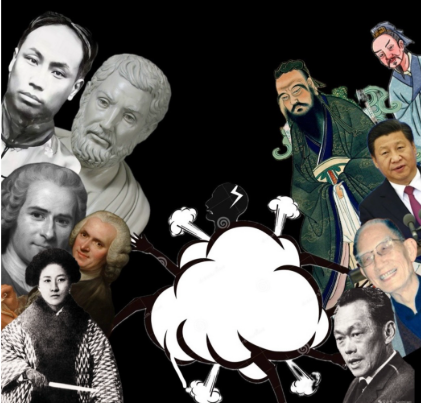
https://kenyanwallstreet.com/kenya-tails-south-africa-as-top-tech-hub-in-africa/
The Rise of China. The Fall of China. The Rise of Japan. You understand where I am heading with this; we have all heard of different non-Western countries we should be keeping an eye on. However, this narrative has been typically used for Asian countries. When it comes to the African continent, who is the next rising nation? There is a strong case to say it is Kenya.
Currently, Africa is the fastest-growing continent, both in terms of its economy and young population, which for some countries has resulted in improved economic governance. Though there are setbacks such as inadequate infrastructure stunting progress and development, there are stand-out nations. Typically, Nigeria, Africa’s most populated nation, would be considered one of them. But, the country is currently experiencing its worst economic crisis in a generation. With high inflation and the Naira’s value dropping, there has been more civil unrest and pressure for governmental change. In Eastern Africa, Ethiopia was also long considered a stand-out, however, the civil war and conflict have resulted in a large humanitarian catastrophe. What makes Kenya stand out?
Kenya has a geographic advantage: its coastline on the Indian Ocean. This makes it easier for Kenya to trade with other parts of the world, such as China and India, for greater trade integration. This has been one of the key reasons for economic success in other areas of the world, such as East Asia. It is also the reason East Africa tends to attract more interest than West Africa. Just like Britain’s industrial revolution was spurred on by the geological benefit of simply having more coal than other countries, Kenya can benefit from its location and natural resources (gold, iron, steel, titanium) to develop its economy.
Kenya already dominates East Africa’s private capital sector and has the largest economy in the region, with the biggest share of investments by a huge margin. Kenya’s main advantage is having a diversified economy made up of agriculture, tourism, telecommunications, and financial services, with some seeing particularly rapid growth. Trade diversification has macroeconomic benefits and has been applied as a strategy for positive economic growth. South Africa is another good example of an African nation with a well-diversified economy, which is partially why it is the richest country in Africa. However, South Africa’s aging power grid and how far south it is on the continent restrict its global influence.
Kenya has also prioritised infrastructure: the Kenyan government has expanded roads, railways and power supplies whilst remaining forward-thinking by aiming to have 100 percent of its energy by 2030 from renewable sources. For comparison, the UK aims to have 30 to 45 percent of its energy from renewable sources by the same year.
A factor that tends to impede potential leading nations in Africa is political instability. South Africa has functioned as a one-party dominant democracy since the end of Apartheid, which has led to a concentration of power through political elites and corruption. There are growing concerns about South Africa’s fall into a debt crisis and how its government will respond. Ethiopia faces huge challenges with political stability, especially outside of Addis Ababa, with high civil unrest and violence. Morocco suffers from an inactive youth population, remaining one of the lowest in the world in regard to labour force participation for youth and women.
On the other hand, Kenya has enjoyed overarching political stability since 2002’s December elections after many years of autocracy. This is not to say there has not been civil unrest or that Kenya does not have its own internal domestic issues. But compared to neighbouring countries, it has had more of a stable environment, facilitating development.
To add to Kenya’s progress, the unemployment rate in 2022 was 5.50 percent, while the literacy rate stood at 82.29 percent, figures that are much higher than those in other African countries. Ethiopia’s literacy rate, for example, is at 48.9 percent, according to estimations from 2022. Somalia’s literacy rate is at 41 percent. Some of the lowest literacy rates in the world are concentrated in sub-Saharan Africa. Kenya’s soaring literacy rates highlight its educational achievement and contribute to its growing, active labour force. Kenya is also in a unique position, reaping the globalisation benefit of being an English-speaking country. Kenya was declared a British colony in 1920, and English remains an official language alongside Swahili. This can open up finance and trade opportunities for Kenya and allow flexibility in its job sector.
Kenya maintains strong economic ties with various countries. Kenya’s largest export market is the United States. There has been a range of interest in creating tech hubs in Kenya, with investment by US and Chinese companies such as Microsoft and Huawei. Between foreign investment and $1.5 billion in US-Kenya trade, it is likely the US and Kenya will negotiate a bilateral trade agreement. This would result in Kenya having increased access to US markets, diversifying its export base, collaborating with technology, and creating more jobs. At the same time, though, Kenya will likely have to adjust its domestic policies with labour rights, intellectual property and environment, Mainly to standardise differences across the two countries.
With all of this in mind, Kenya will only make more sense to be the leader of the rise in Africa, especially with its English-speaking background, diverse economy and young population. With the already developed West and the current cost-of-living crisis, maybe Kenya is the next place that expats will look at to make the move.
Other posts that may interest you:
- Carbon dioxide removal – hit or miss?
- Local Victories for Turkish Opposition — A Sign of Hope?
- Are France and Japan a Mismatch Made in Heaven?
- A Reflection on Dark Tourism
- Cadavre Exquis : Goodbye stranger
Discover more from The Sundial Press
Subscribe to get the latest posts sent to your email.





